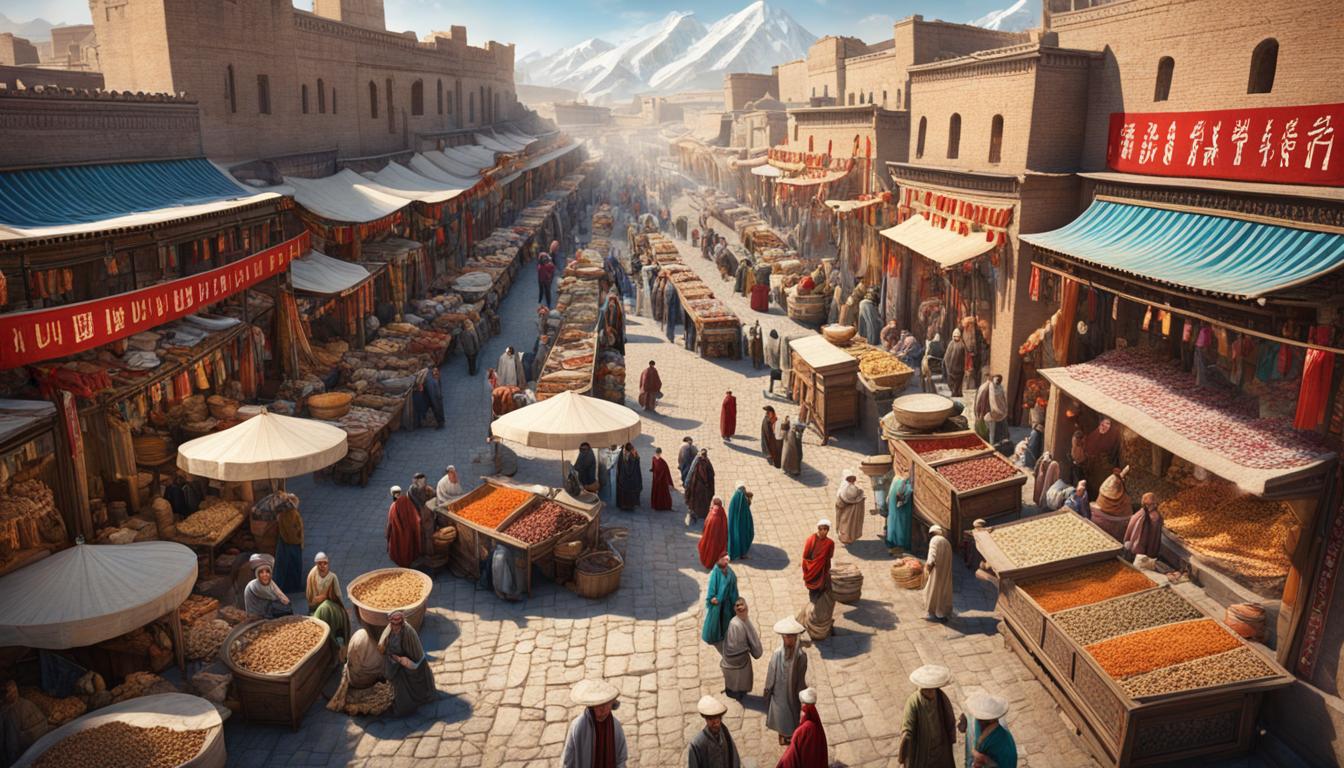Tracing History: A Traveler’s Guide to the Silk Road
Have you ever wondered how the world’s cultures shared and influenced each other over time? How did they trade items and ideas over long distances in ancient times? The answer is found in the mysterious Silk Road.
The Silk Road was more than a path from the East to the West. It was a cultural bridge, connecting people from various places. For over two thousand years, it enabled the trade of goods, technologies, and thoughts across nations.
Though Chinese silk was the route’s most famous export, it carried many other treasures. Spices, precious metals, artwork, and even technologies like paper and gunpowder were among its trades.
But the Silk Road was not just about business. It was also a way for languages, beliefs, and sciences to flow between lands. It mixed cultures, religions, and ideas, becoming a hub of knowledge exchange.
Join a virtual trip down the Silk Road. Explore legendary sites full of cultural heritage. Learn about brave adventurers like Marco Polo and the beauty of the Far East’s cultures.
Key Takeaways:
- The Silk Road connected cultures across the Eurasian continent for over two thousand years.
- It facilitated the exchange of goods, technologies, language, culture, and knowledge.
- Chinese silk was just one of the many treasures traded along the Silk Road.
- Exploring the Silk Road allows us to witness the enduring legacy of this ancient network.
- The Silk Road adventure promises a captivating journey through history and the rich cultural tapestry of Asia.
The History of the Silk Road
The Silk Road was a vast network of trade routes, spanning thousands of miles. It connected different civilizations. This rich history was shaped by remarkable individuals. These travelers left a lasting impact on cultural exchange and exploring the ancient world.
- Zhang Qian: In 138 BCE, Zhang Qian was sent by the Han emperor and is known as the Silk Road’s father. He went on a mission to establish alliances. This opened the way for future trade and cultural exchange along this historic route.
- Xuanzang: Xuanzang was a devout Buddhist who went on a sacred journey to India in the 7th century. His travel along the Silk Road enabled him to visit cities such as Tashkent and Samarkand. He sought Buddhist scriptures to deepen his understanding of Buddhism.
- Marco Polo: In the 13th century, Marco Polo journeyed through the Silk Road. His book, “The Travels of Marco Polo,” introduced Europe to the wonders of the Far East. It also highlighted the region’s vast wealth and cultural diversity.
- Ibn Battuta: Originally from Tangier, Ibn Battuta’s journey began as a pilgrimage to Mecca. It expanded into a 27-year odyssey covering 75,000 miles. His travels ranged from West Africa to Malaysia, covering major parts of the Silk Road.
- Timur the Lame: Known as Tamerlane, Timur was a conqueror who expanded his empire through military conquests. He made Samarkand a significant city along the Silk Road. It became one of the most prosperous cultural and commercial hubs.
- Aurel Stein: Aurel Stein made key contributions to the Silk Road’s exploration as a cartographer and archaeologist. His journeys resulted in important discoveries on the ancient trade routes. This includes the famous “Cave of the Thousand Buddhas” in Dunhuang.
These key figures and many others played vital roles in the Silk Road’s history. Their journeys and explorations acted as bridges between cultures. They encouraged trade, the exchange of knowledge, and the conservation of history.
Conclusion
The Silk Road Adventure lets you explore a mix of historical sites, diverse cultures, and amazing experiences across Asia.
Exploring the ancient trade routes connects you with rich history and heritage. You’ll see the Terracotta Warriors in Xian and the Islamic beauty of Samarkand and Bukhara. These historical sites are awe-inspiring and continue to amaze people.
But, it’s not just historic sites the Silk Road offers. It’s an opportunity to know vibrant cultures and taste delicious foods. You’ll meet local artists and experience the warmth of communities that are centuries old.
Traveling the Silk Road is like going back in time. It celebrates a network of trade and cultural exchange. By following paths of great explorers like Marco Polo, you discover the rich tapestry of Asian history and culture.







